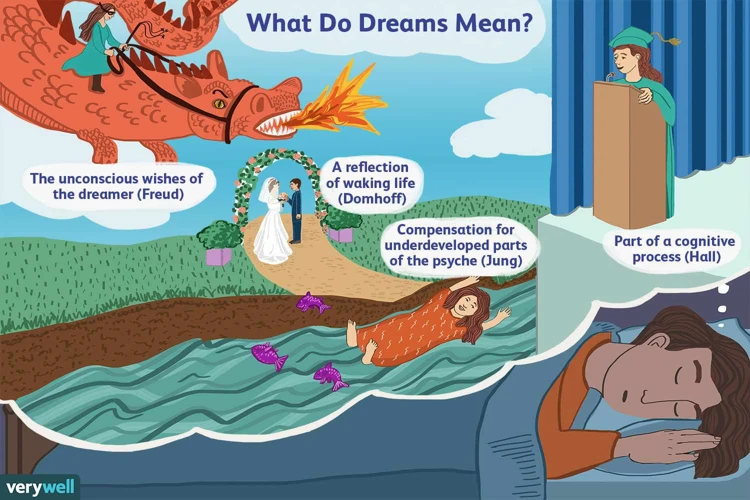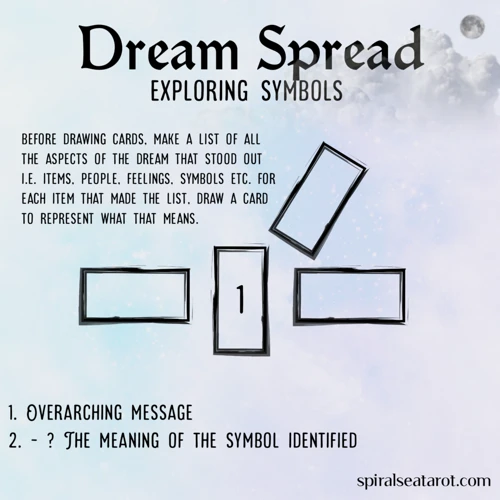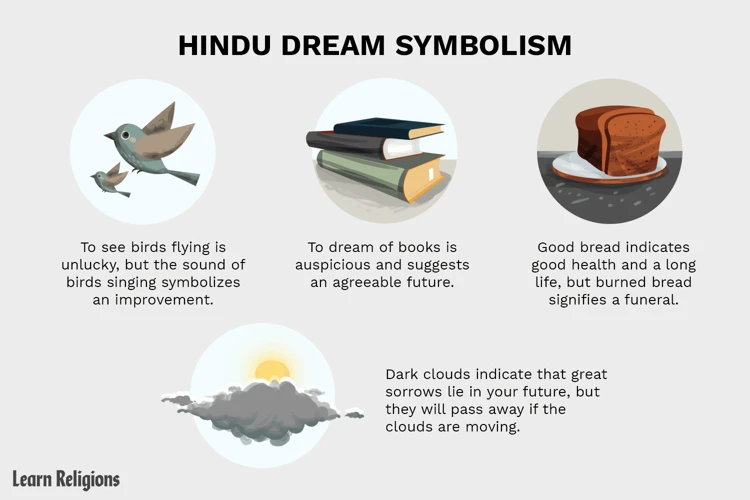Dreams have always held an air of mystery and intrigue, captivating both scientists and the common individual. As we sleep, our minds transport us to an alternate reality filled with vivid imagery and intense emotions. One fascinating aspect of dreams is their ability to portray joy and happiness in various forms. In this article, we will delve into the science behind dreams, explore common symbols of joy and happiness, interpret dream scenarios related to these emotions, and unravel the cultural significance of joy and happiness in dream symbolism. Additionally, we will provide tips for cultivating joy in waking life. So, let us embark on this enigmatic journey as we decipher the role of joy and happiness in dream imagery.
The Science Behind Dreams

The Science Behind Dreams:
– Dreams have long intrigued scientists and researchers who seek to understand the complex workings of the human mind during sleep. While the exact purpose and meaning of dreams are still hotly debated, there are several theories that shed light on the science behind these enigmatic experiences.
– One widely accepted theory is that dreams serve as a way for the brain to process and consolidate information from the day. During REM (rapid eye movement) sleep, the stage where most vivid dreaming occurs, the brain is highly active. It is believed that this brain activity is responsible for organizing and storing memories, as well as making connections between different pieces of information.
– Another theory suggests that dreams act as a form of emotional regulation. While we sleep, our brains have the opportunity to process and regulate emotions that we may have suppressed or not fully dealt with while awake. This can explain why dreams often contain intense emotions like joy, happiness, fear, or sadness.
– Additionally, dreams provide a platform for the brain to simulate different scenarios and experiences. It is hypothesized that this simulation process helps with problem-solving, creativity, and decision-making in waking life.
– Neurotransmitters and hormones also play a crucial role in dream formation. Chemicals such as serotonin, dopamine, and norepinephrine influence the content and emotional tone of dreams. Neurotransmitter imbalances or fluctuations can contribute to experiencing more joyful or happy dreams, while other imbalances may lead to more negative or distressing dream experiences.
By understanding the science behind dreams, we can begin to unravel the mysteries of joy and happiness in dream imagery. Through further exploration, we can gain insights into the role these emotions play in our subconscious mind. Don’t forget to check out our article on the symbolism of laughter in dreams to dive deeper into the emotional aspects of dream interpretation.
Exploring Dream Symbols

Dreams are often filled with a myriad of symbols that hold deeper meanings and hidden messages. Exploring dream symbols is like unraveling a mysterious puzzle, as each symbol can represent something unique to the dreamer. Symbols of joy and happiness in dreams can range from simple objects to complex scenarios, all of which contribute to the overall emotional experience. While the interpretation of dream symbols is subjective and personal to each individual, there are common symbols of joy and happiness that tend to appear often. These symbols can include bright colors, laughter, smiling faces, beautiful landscapes, serene environments, and joyful reunions. Understanding the meaning behind these symbols can provide valuable insights into the dreamer’s subconscious desires, experiences, and emotions. To gain a deeper understanding of the emotional aspects of dreams, you may also be interested in exploring the hidden messages of sadness in dreams.
1. Common Symbols of Joy and Happiness
1. Common Symbols of Joy and Happiness:
– Dreams often employ a rich tapestry of symbols to represent joy and happiness. These symbols can vary from person to person, but there are some common motifs that frequently appear in dreams when joy and happiness are being conveyed.
– One such symbol is the presence of bright colors. In dreams, vibrant and vivid colors such as yellow, pink, and orange are often associated with positive emotions. These hues can appear in various dream objects and scenarios, such as a sunny landscape, a colorful bouquet of flowers, or a radiant smile on someone’s face.
– Another common symbol is laughter. Dreaming of laughter can be a clear indication of joy and happiness. It may involve hearing laughter from unknown sources or finding yourself in a situation where everyone around you is filled with contagious laughter. Laughter is a universal expression of joy, and its presence in dreams can signal a sense of lightheartedness and contentment.
– Animals can also symbolize joy and happiness in dreams. Playful and friendly animals like puppies, kittens, or dolphins often represent feelings of joy and positive energy. Interacting with these animals in a dream can evoke a sense of happiness and well-being.
– Beautiful scenery or serene environments can also be symbolic of joy and happiness. Dreaming of being in a picturesque location, such as a beach with sparkling blue waters or a peaceful meadow filled with blooming flowers, can evoke a profound sense of joy and tranquility.
– It’s important to note that dream symbols are subjective and can vary based on personal experiences and cultural backgrounds. While these symbols may commonly represent joy and happiness, their interpretation can also be influenced by individual associations and context.
Understanding the common symbols of joy and happiness in dreams can provide valuable insights into our emotional states and desires. As we explore the symbolic language of dreams, we can gain a deeper understanding of our subconscious mind and the ways in which it communicates with us. For more information on the meaning of different dream symbols, check out our article on the meaning of tears in dreams.
2. Context and Personal Associations
Context and Personal Associations:
– When it comes to interpreting dream symbols related to joy and happiness, context plays a crucial role. The same symbol can have different meanings depending on the overall context of the dream. It is important to consider the specific details, events, and emotions that surround the symbol of joy or happiness.
– For example, dreaming of a sunny beach can commonly represent joy and relaxation. However, if the dream takes place during a storm or in a chaotic setting, the symbol of the beach may take on a different meaning. The context provides clues to understanding whether the joy portrayed in the dream is genuine or perhaps a mask for underlying stress or anxiety.
– Personal associations also heavily influence the interpretation of joy and happiness in dream symbolism. Our past experiences, cultural background, and individual beliefs shape the way we perceive and interpret symbols. For instance, someone who associates the color yellow with happiness may perceive a dream with a yellow flower as a symbol of joy, while others may have different associations.
– The key is to take into account your own personal experiences and feelings connected to certain symbols. Reflecting on how those symbols have made you feel in the past can help uncover the deeper meanings behind your dreams.
– Keeping a dream journal can be a useful tool in understanding the personal associations you may have with specific symbols. Record your dreams and take note of the emotions and reactions you had while dreaming. Over time, patterns may emerge that can provide insight into your unique interpretation of joy and happiness in dream imagery.
Understanding the context and personal associations surrounding joy and happiness symbols in dreams allows for a more nuanced interpretation. By examining the specific details and individual perspectives, we can unlock the hidden messages and meanings that dreams convey. Remember that dream interpretation is a highly subjective process, and no one knows your dreams better than you do.
Interpreting Dream Scenarios

Dream scenarios often serve as a gateway into our subconscious, providing glimpses into our deepest desires and fears. When it comes to interpreting dream scenarios, it is essential to consider the specific emotions, symbols, and context within the dream. One common scenario associated with joy and happiness is dreaming of laughter and smiling. This may indicate a sense of contentment, fulfillment, or a release of tension in waking life. It is vital to reflect on the people, places, and events within the dream to gain a better understanding of the underlying message. Another dream scenario that signifies happiness is experiencing euphoria. This intense feeling of joy and elation can signify a heightened sense of achievement, success, or a deep sense of satisfaction. By examining the details and emotions present in dream scenarios, we can unravel the hidden meanings and gain valuable insights into our own happiness and well-being.
1. Dreaming of Laughing and Smiling
Dreaming of Laughing and Smiling:
Dreams that involve laughter and smiling can be incredibly uplifting and enjoyable. When you dream of laughing, it often signifies a sense of joy, happiness, and contentment in your waking life. It is a reflection of the positive emotions you are experiencing or the pleasant situations you are encountering. Laughing in dreams can also indicate a release of stress and tension, allowing you to experience a sense of relief and relaxation.
Smiling in dreams represents a similar sense of happiness and contentment. It suggests that you are finding joy in your everyday life and are content with the current circumstances. Smiling dreams can also signify a positive outlook and optimism for the future.
It is important to note that the context of the dream is essential in interpreting the meaning of laughter and smiling. For example, if you are laughing and smiling with loved ones or in pleasant surroundings, it signifies a deep sense of connection, happiness, and fulfillment. Conversely, if the laughter and smiling feel forced or uncomfortable, it may indicate that you are masking your true emotions or putting on a facade in your waking life.
Additionally, the presence of other dream symbols and actions can provide further insight into the meaning behind dreaming of laughing and smiling. For instance, if you are laughing and smiling while engaged in a favorite hobby or surrounded by nature, it could indicate a deep sense of fulfillment and joy in those activities.
Dreaming of laughing and smiling is a positive sign, representing the joy and happiness you are experiencing or seeking in your waking life. Embrace the positive emotions and take note of the context to gain a deeper understanding of the significance of laughter and smiling in your dreams.
2. Experiencing Euphoria in Dreams
Experiencing Euphoria in Dreams:
– Euphoria is a state of intense joy and happiness, and it is not uncommon to experience this exhilarating emotion in dreams. When euphoria arises in dreams, it can leave a lasting impression and evoke a sense of wonder upon waking. Here are some key aspects to consider when interpreting dreams of euphoria:
1. Emotional Release: Dreams provide a safe space for emotional release, and experiencing euphoria in a dream can be a reflection of the individual’s need for emotional upliftment and a desire for joy in their waking life. It may signify a deep longing for happiness, contentment, or a wish for certain aspects of life to be more fulfilling.
2. Inner Fulfillment: Euphoric dreams can also be an indication of internal satisfaction or a sense of accomplishment. These dreams may symbolize the fulfillment of long-desired goals, reaching a state of peace or contentment, or embracing newfound happiness in one’s life.
3. Escapism and Fantasy: Dreams often provide an escape from reality, allowing individuals to engage in scenarios that may seem impossible or improbable in waking life. Euphoric dreams can transport people into a fantasy world where they experience joyful and blissful moments. This imaginative aspect of dreams can offer a break from the challenges and stresses of everyday life.
4. Unconscious Desires: Dreams can serve as a window into the subconscious mind, revealing hidden desires or unexpressed emotions. Experiencing euphoria in dreams may signify suppressed feelings of happiness, pleasure, or satisfaction that the individual may not acknowledge or pursue in their waking life. It could be a prompt to seek out sources of joy and happiness in a more conscious and intentional manner.
5. Personal Interpretation: It is important to remember that dream symbolism is highly subjective and can vary from person to person. The context and personal associations attached to euphoric dream experiences play a crucial role in interpretation. Factors such as the dreamer’s life circumstances, past experiences, and emotional state should be considered when deciphering the specific meaning and significance of euphoria in their dreams.
Understanding the complexities of euphoria in dreams can provide insights into an individual’s emotional landscape and desires. By paying attention to the details and emotions within these dreams, one can unravel the unconscious messages and potentially find ways to cultivate more joy and happiness in their waking life.
Understanding Emotional Subtext

Understanding Emotional Subtext:
– Dreams are not just a random jumble of images and events; they often carry deeper emotional subtext that can provide valuable insights into our subconscious thoughts and feelings. By decoding the emotional subtext of dreams, we can gain a better understanding of ourselves and our inner emotional landscape.
– One way to interpret the emotional subtext of dreams is to pay attention to the feelings experienced during the dream. Whether it is joy, happiness, sadness, or fear, the emotions felt in the dream can reflect our true emotions or desires in waking life. For example, a dream filled with joy and happiness may signify contentment and satisfaction in our current state, or it could represent a longing for more joy and happiness in our lives.
– Another aspect to consider is the intensity of emotions in the dream. Strong and vivid emotions can indicate unresolved issues or suppressed emotions that need attention. Dreams can serve as a safe space for our subconscious mind to bring these emotions to the surface, allowing us to process and work through them.
– It’s essential to analyze the context of the dream and identify any recurring symbols or patterns related to joy and happiness. For instance, dreaming of a sunny beach or a peaceful meadow may indicate a yearning for relaxation and joy in our waking lives. On the other hand, dreaming of sharing laughter and happiness with loved ones may reflect the importance of connection and relationships in bringing happiness to us.
– Personal associations with specific symbols and events in dreams also play a significant role in interpreting the emotional subtext. A symbol that brings joy and happiness to one person may have an entirely different meaning for another. It is crucial to reflect on our personal experiences, memories, and cultural background to fully comprehend the emotional subtext of our dreams.
Understanding the emotional subtext of dreams requires introspection and careful analysis. By delving into the emotions, intensity, context, and personal associations within our dreams, we can gain valuable insights into our emotional well-being and work towards cultivating more joy and happiness in our waking lives.
Symbolism of Joy and Happiness in Different Cultures

Symbolism of Joy and Happiness in Different Cultures:
– Joy and happiness are universal emotions that hold great significance across various cultures. While the experience of joy may be subjective, the symbols and expressions associated with these emotions can vary widely.
– In Western cultures, symbols of joy and happiness often include smiling faces, laughter, and vibrant colors. These symbols convey a sense of positivity and well-being. For example, the iconic smiley face symbolizes happiness and is recognized and understood in many parts of the world.
– In Asian cultures, symbols of joy and happiness often incorporate elements from traditional folklore and spirituality. For instance, in Chinese culture, the color red is associated with joy and good fortune. The Chinese character “喜” (xi), meaning joy, is commonly used in celebrations and auspicious occasions.
– In Hindu culture, the symbol of a lotus flower represents the journey of the soul from darkness to enlightenment, thereby signifying inner joy and spiritual growth. The concept of “Ananda” in Hinduism and Buddhism signifies a state of bliss or divine joy that can be attained through meditation and self-realization.
– African cultures express joy and happiness through vibrant dance and music traditions. For example, in West African cultures, the djembe drum is associated with joyous celebrations and communal harmony. The rhythmic beats and energetic movements serve as a form of expression and release, evoking feelings of joy and unity.
– Indigenous cultures often have their own unique symbols and rituals surrounding joy and happiness. For example, in Native American cultures, the sun symbolizes joy, warmth, and vitality. The sun dance, a ceremonial dance held during the summer solstice, is a celebration of life and renewal, bringing a sense of happiness and connectedness to the community.
Understanding the symbolism of joy and happiness in different cultures allows us to appreciate the rich diversity of human experiences. It reminds us that while these emotions may be universal, their expressions and interpretations can vary greatly. By exploring and embracing these cultural perspectives, we can broaden our understanding of joy and happiness in the context of dreams and waking life.
Tips for Cultivating Joy in Waking Life
Tips for Cultivating Joy in Waking Life:
1. Practice Gratitude: Cultivating a sense of gratitude can significantly enhance feelings of joy and happiness in everyday life. Take a few moments each day to reflect on the things you are grateful for. This can be as simple as appreciating a beautiful sunset, a delicious meal, or the company of loved ones. Keeping a gratitude journal can also be a helpful way to remind yourself of the positives in your life.
2. Engage in Activities that Bring Joy: Identify activities that bring you joy and make a conscious effort to incorporate them into your daily routine. This could be anything from taking a walk in nature, listening to your favorite music, playing an instrument, painting, or practicing a hobby that you love. Making time for activities that bring you joy can have a significant impact on your overall well-being.
3. Surround Yourself with Positive People: The company we keep can have a profound influence on our mood and outlook on life. Surround yourself with positive, uplifting individuals who bring joy and happiness into your life. Engage in meaningful conversations, share laughter, and support each other in times of need. This positive social interaction can significantly contribute to your overall sense of joy.
4. Practice Mindfulness and Meditation: Mindfulness and meditation techniques have been shown to reduce stress and increase feelings of joy and happiness. Take a few minutes each day to practice deep breathing exercises, meditation, or simply being fully present in the moment. These practices can help you cultivate a greater sense of clarity, focus, and joy in your daily life.
5. Take Care of Your Physical Health: Physical health and mental well-being are closely interconnected. Engage in regular exercise, eat a balanced diet, and get enough sleep to support your overall well-being. Regular physical activity releases endorphins, known as “feel-good” hormones, which can boost your mood and increase feelings of joy and happiness.
6. Spread Acts of Kindness: Engaging in acts of kindness towards others can have a profound effect on your own sense of joy and happiness. Simple acts like offering a helping hand, expressing gratitude, or giving compliments can brighten someone else’s day and bring about a sense of fulfillment and joy within yourself.
Remember, cultivating joy in waking life is a personal journey and may look different for each individual. Experiment with these tips and adapt them to suit your own preferences and needs. By consciously seeking and nurturing joy in your everyday life, you can enhance your overall well-being and create a more joyful and fulfilling existence.
Conclusion
Conclusion:
– The realm of dreams continues to captivate and intrigue us, as we explore the role of joy and happiness in dream imagery. Through the lens of scientific understanding, we have discovered that dreams hold immense potential for emotional processing, memory consolidation, problem-solving, and creative exploration.
– Common symbols of joy and happiness in dreams, such as laughter and smiles, can represent positive emotions and experiences in our waking lives. However, it is crucial to consider the context and personal associations surrounding these symbols when interpreting dream scenarios.
– Dreaming of laughter and smiling can signify feelings of joy, contentment, and a sense of fulfillment. These dreams offer a glimpse into our emotional well-being and can serve as a reminder to embrace happiness and positivity in our daily lives.
– Experiencing euphoria in dreams can be a reflection of our deepest desires, passions, and aspirations. Such dreams may inspire us to pursue our goals and find fulfillment in the pursuit of happiness.
– Understanding the emotional subtext of dreams is essential for unraveling their meaning. Emotions expressed in dreams can be indicators of unresolved issues, unmet needs, or desires that require attention and exploration.
– It is also important to recognize that dream symbolism and interpretation can vary across different cultures. Joy and happiness may have specific cultural associations and meanings that contribute to their representation in dream imagery.
– In waking life, cultivating joy is vital for our overall well-being. Engaging in activities that bring us happiness, connecting with loved ones, practicing gratitude, and embracing a positive mindset can help us experience more joy in everyday life.
As we conclude this exploration of joy and happiness in dream imagery, we encourage you to explore the depths of your dreams and uncover the messages they hold. Embrace joy, seek happiness, and let your dreams guide you towards a fulfilling and joyous existence.
Frequently Asked Questions
FAQs about the Science Behind Dreams
1. What is the purpose of dreaming?
Dreaming serves various purposes, including memory consolidation, emotional regulation, and problem-solving. However, the exact purpose of dreaming is still a subject of ongoing scientific debate.
2. Why do we forget most of our dreams?
Dreams are stored in our short-term memory, which is fragile and easily overwritten. As a result, we often forget our dreams shortly after waking up.
3. Can dreams predict the future?
There is no scientific evidence to support the notion that dreams can predict the future. Dreams are generally considered to be a reflection of our thoughts, emotions, and experiences.
4. Can dreams be influenced by external factors?
Yes, external factors such as sleeping environment, temperature, noise, and light can influence the content and intensity of dreams.
5. Do all people dream in the same way?
Dreams can vary greatly from person to person in terms of content, frequency, and intensity. However, the underlying mechanisms and stages of sleep are similar for everyone.
6. Can lucid dreaming be achieved deliberately?
Yes, with practice and certain techniques, some individuals can learn to become aware that they are dreaming and even control their dream experiences.
7. Are nightmares more common than pleasant dreams?
Nightmares are relatively common and tend to be more memorable because they often evoke intense emotions. However, the frequency of nightmares can vary from person to person.
8. Can dreams be a reflection of real-life suppressed emotions?
Yes, dreams can provide a platform for the subconscious mind to process and express emotions that may have been suppressed or not fully dealt with in waking life.
9. Why are dreams often difficult to interpret?
Dreams can be highly symbolic and subjective, making them challenging to interpret. The meaning of a dream can vary depending on personal experiences, cultural influences, and individual psychology.
10. Can dreams have physical effects on the body?
While dreaming itself does not directly cause physical effects, some individuals may experience physiological responses during intense dreams, such as increased heart rate or sweating.








